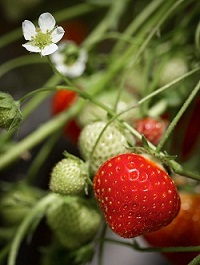How to Grow Fenugreek | Complete Growing Guide
Learn how to grow fenugreek step by step.
Fenugreek or ‘Methi’ is native to Southwest Asia and widely cultivated for its medicinal and culinary uses. It is an all purpose plant. Seeds are used as spice, dried leaves as herb and fresh small leaves as vegetable. It tastes like spinach or even better.
Difficulty: Easy
Growing Season: Spring and summer (year round in tropics)
Other Names: Trigonella foenum-graecum (botanical name), methi, samudra methi, shanbalile, abesh, hilbeh, hilba, helba, halba
Growing fenugreek is easy, whether you live in a sub tropical or tropical part of the world or in temperate or colder part. It can be grown both on grounds or in containers. You can also grow it on windowsills in small pots, on a balcony or terrace.
How to Grow Fenugreek
Create Fenugreek bed with cilantro or grow it alone. You can cultivate it from seeds. It’s easy even for beginners.
Sow seeds ¼ inches deep in a good potting mix or soil.
Remember, fenugreek hates to be transplanted. Leave 2 inches of space for each plant while sowing seeds. They’ll sprout quickly and you’ll see seedlings just within 2 – 4 days.
*Buy best quality seeds from garden center or online. You can also buy it from grocery stores or spice shops as its seeds are sold as spice but beware of poor germination rate.
*You can directly sow seeds but if you’ve bought them from grocery stores, soak them overnight to increase germination rate before sowing.
Growing Fenugreek in Container
You can grow fenugreek in containers. It’s similar to cilantro or parsley. Take a shallow wide planter at least 6 inches deep (fenugreek has shallow roots) with good drainage. Fill it with good potting mix. You can use compost, sand and soil too. Sprinkle seeds all over it and add a thin quarter inch layer of soil over them.
Growing Climate
Fenugreek grows well in warm and hot climate, when temperature ranges from 50 to 90 F (10 C to 32 C). If you’re planting it for seeds, grow it in spring. If you’re cultivating it to use as a vegetable or herb then you can plant it anytime between spring to mid fall.
Requirements for Growing Fenugreek and Care
Fenugreek prefers neutral soil with pH level around 6 – 7. Plant it in a spot that receives at least 4 hours of sun with shade in afternoon. Do regular watering, let the soil dry out between watering sessions and care not to over-water the plant to save it from root rot. Fenugreek does not require fertilizer however, you can mix manure or compost in soil while planting.
Pests and Diseases
Fenugreek does not have many pests and diseases. Some pests that attacks it are aphids, powdery mildew, charcoal rot and root rot. You can easily save your plant from these problems by using organic pesticides regularly and watering properly.
Harvesting Fenugreek
Within 20 days fenugreek will be ready for first harvest, chop up its leaves to use as green leafy vegetable and prepare delicious recipes or air dry it to use as herb. Leave the twigs, which will grow up again within 15 days, you can do this up to four times. To harvest fenugreek seeds you’ve to wait for 2-4 months, depending on the growing conditions.
Uses
It’s sweet and hot aroma like pepper and crunchy sour taste somewhat like spinach ,creates a magic. It is popularly used in Indian, Persian, Egyptian and Ethiopian cuisines, to prepare tastiest recipes. Fresh seeds used to sprinkle on salad and dried seeds in pickles.




